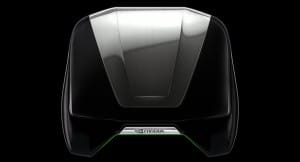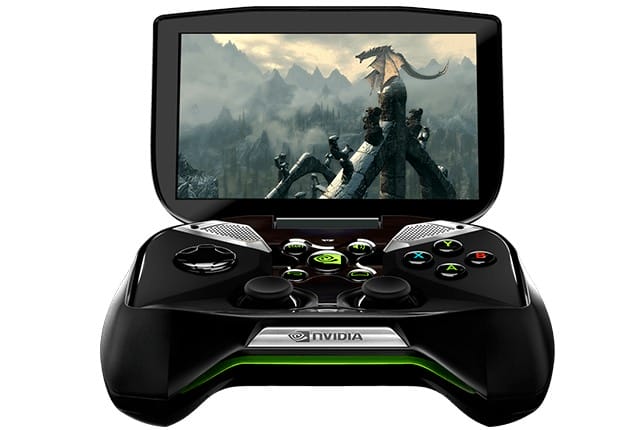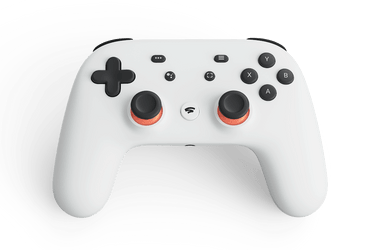With the recent holding of the annual International CES show, video games consumers once again have a mobile portable gaming device to look forward to. I’m talking about one of the awesome announcements we’ve heard so far, NVIDIA’s Project Shield handheld gaming console.
 According to the Wall Street Journal, the device is codenamed “Project Shield,” and runs on Android Jellybean. It looks like a classic full-sized gamepad with an attached (or detachable) hinge-style 720p “retinal” multi-touch screen, runs off the newest version of the company’s Tegra-series “system on a chip” processors — specifically, a custom 72-core Nvidia GeForce GPU / quad-core A15 CPU – and doesn’t yet have a release date. Nvidia claims it employs “breakthrough” Wi-Fi technology and “stunning” high-definition video and audio.
According to the Wall Street Journal, the device is codenamed “Project Shield,” and runs on Android Jellybean. It looks like a classic full-sized gamepad with an attached (or detachable) hinge-style 720p “retinal” multi-touch screen, runs off the newest version of the company’s Tegra-series “system on a chip” processors — specifically, a custom 72-core Nvidia GeForce GPU / quad-core A15 CPU – and doesn’t yet have a release date. Nvidia claims it employs “breakthrough” Wi-Fi technology and “stunning” high-definition video and audio.
Who knows how capable it’ll be of running, say, something on par with Crysis 3, what demographic Nvidia’s really targeting and whether the launch games will be platform-unique or just repeats of what you can play on any other Android device. Regardless, it is kind of a big deal from an industry standpoint.
Chances are if you’ve played a game at any point during the past 20 years, you’ve played on Nvidia hardware. The company got into the chip biz on the PC side of things back in 1993, eventually snapping up rival 3dfx in 2000 and hopping into set-top consoles with the advent of Microsoft’s original Xbox in late 2001. Since then, Nvidia’s been a vanguard in game-hardware design. It’s GeForce series of PC processors still dominate the PC gaming landscape (Nvidia’s only rival is AMD/ATI and it’s well ahead in terms of discrete graphics market share) and it’s the GPU brain-center of Sony’s PlayStation 3 (the so-called “RSX Reality Synthesizer”). You’ll find Nvidia’s Tegra-series of mobile processors in smartphones ranging from the HTX One X to various Motorola and Samsung mobile devices, and Nvidia just so happens to be the GPU powering both my MacBook Pro Retina (a GeForce GT 650M) and the strictly-for-gaming PC sitting under my desk (a GeForce GTX 670).
 So, while we’re not exactly sure as to what the target audience Nvidia is looking to lock onto, we’re pretty confident in their ability to bring a video game to life through intense graphics. But Why the move to “verticalize” and get into the end-platform game? Probably for the reasons the Journal mentions: “Nvidia has, in recent years, given up ground to rival AMD in the set-top market. Nintendo’s consoles from the GameCube forward have all used AMD/ATI parts. The Xbox 360 uses an AMD/ATI graphics processor, and Microsoft’s next set-top, whatever it’s called, has been rumored for years to employ an AMD/ATI graphics core.” As the Journal notes, Microsoft recently made a similar move from the opposite direction with its Microsoft-manufactured Surface tablet. And then there’s the whole history of Nvidia’s on-again, off-again relationships with companies like Apple.
So, while we’re not exactly sure as to what the target audience Nvidia is looking to lock onto, we’re pretty confident in their ability to bring a video game to life through intense graphics. But Why the move to “verticalize” and get into the end-platform game? Probably for the reasons the Journal mentions: “Nvidia has, in recent years, given up ground to rival AMD in the set-top market. Nintendo’s consoles from the GameCube forward have all used AMD/ATI parts. The Xbox 360 uses an AMD/ATI graphics processor, and Microsoft’s next set-top, whatever it’s called, has been rumored for years to employ an AMD/ATI graphics core.” As the Journal notes, Microsoft recently made a similar move from the opposite direction with its Microsoft-manufactured Surface tablet. And then there’s the whole history of Nvidia’s on-again, off-again relationships with companies like Apple.
No doubt Nvidia wants end-to-end control of the process (as well as that hypothetically bigger slice of the revenue pie). “Project Shield” sounds like a toe in the water, then, a chance to see see how well it can design and market a consumer-ready product, while capitalizing on a long history of working with game developers to optimize game performance across all kinds of devices.
In any event, assuming Nvidia sells this thing at a competitive price point and releases it soon, and in case you thought the market for standalone Android-based game consoles looked a little shaky with first-timers like OUYA and Gamestick leading the charge, the playing field just got worlds more interesting. Stay tuned to TechCity for more gaming news!
As an Amazon Associate, TechCity may earn a small commission if you shop these products.
















I thought it was gonna be a few uninteresting aged post, but it surely compensated for time. Let me post one of the links to this page in my blog. I am certain my personal visitors will quickly realize in which very useful.